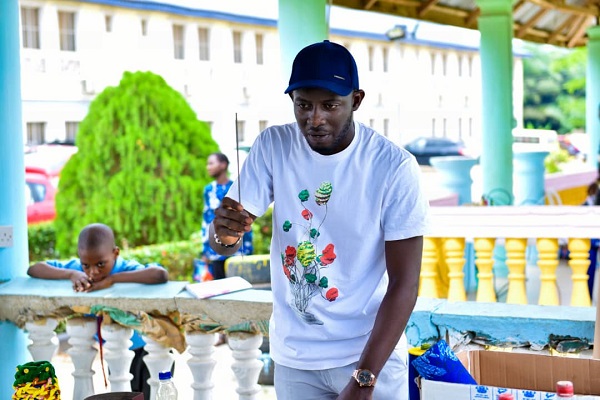John Edom sees himself as a friend of waste and has resolved to dedicate his life to “giving waste a second chance” by upcycling them into artistic products that can be reused.
WHO IS JOHN EDOM?
Edom is a 33-year-old Nigerian from Cross River. He is an artist, a sculptor and an upcycler. He had his primary education at Glory Ville school in Lagos and his secondary education at Stella Maris Seminary School in Cross River. As a child, Edom had what he described as “a creative and abstract mind” and so he experimented a lot with materials, images and colours. His parents never opposed his dreams and so when it was time to choose a career path, he went ahead to study visual art and tech at the Cross River State University (CRUTECH) where he also obtained a master’s degree in the same course.
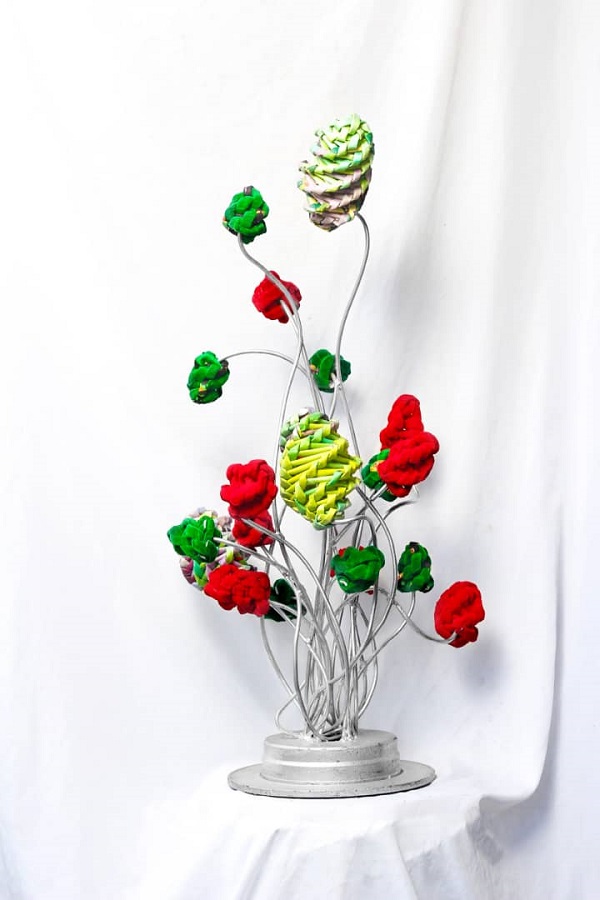
THE UPCYCLING PATHWAY TO FULFILMENT
Advertisement
During the course of his master’s degree programme at CRUTECH, Edom began researching the economic use of waste for artistic and production purposes. In doing this, he discovered upcycling, a process of reusing discarded objects or materials to create products of higher quality or value than the original.
Although he knew little about climate change at the time, Edom said he was just doing his part to rid the environment of waste and use them for meaningful products instead. But with more exposure to the contribution of waste to the global issue, Edom began seeing his work in a different light.
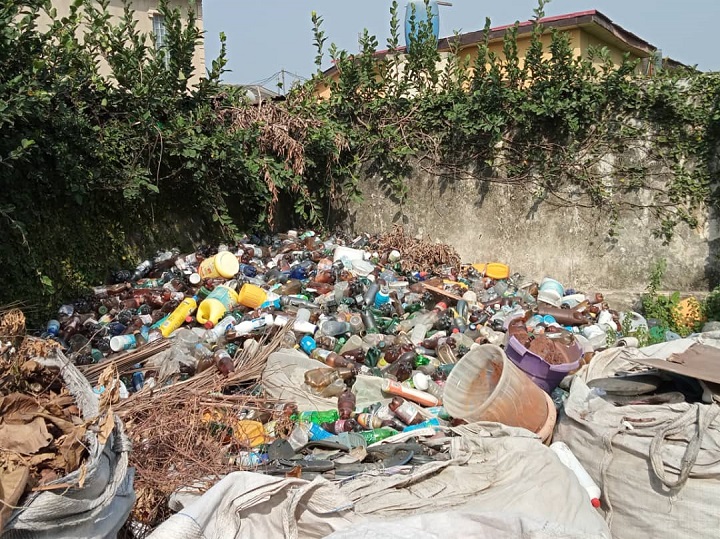
“When I began gaining awareness of climate change, I discovered that what I do is not just creating products to sell or creating aesthetics, but I was also in my own little way trying to solve a problem,” he said.
Advertisement
“Because these waste, when they incinerate them, they end up causing environmental pollution to humans who inhale them; affecting their health and adding to greenhouse gases that cause climate change.”
With over five years in the business of upcycling, Edom has made many valuable products ranging from flower vases to Christmas trees, sitting stools, centre tables, chairs — and even clothing from waste materials.
He said he finds fulfilment in what he does and has trained over 1000 people so far. All these he does with one mantra only — “to give waste a second chance”.
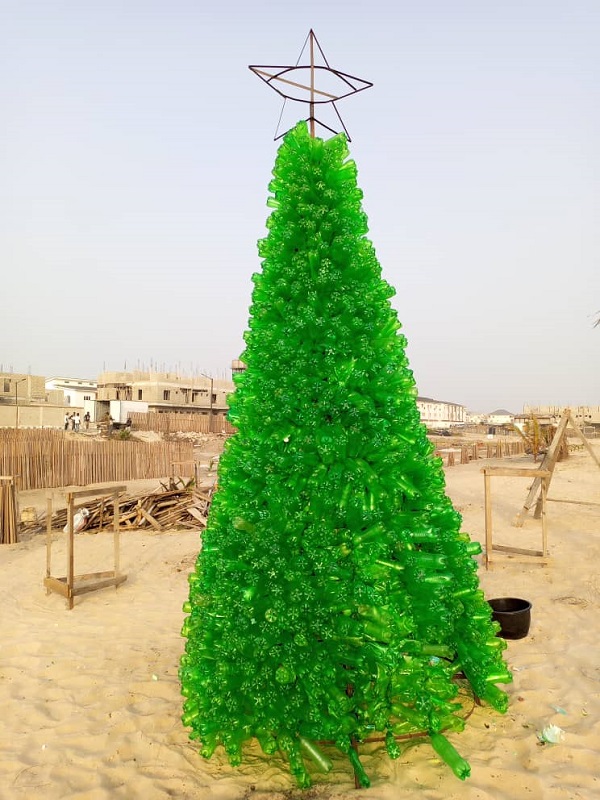
WASTE TO WEALTH
Advertisement
In the process of giving waste a second chance and preserving the environment, what started as a passion for Edom now earns him money. He said he makes nothing less than N5,000 as payment for his art pieces.
It is extremely satisfying for Edom to see that “people are willing to pay for something I made out of nothing,” adding that he uses “virtually any waste you can think of including eggshells, periwinkle shells, bottles, disks, sachets and plastics to create arts”.
He sources these materials from all kinds of places, including gutters, roads, dump sites and even at events.

“Most of the materials I work with; I get them from the environment. I visit people’s homes to collect, and I go to wedding receptions and occasions to pick cans and plastic bottles I can lay my hands on,” he said.
Advertisement
Through his endeavour, he has won awards and gained recognition such as the 2019 SDG champion, and was also nominated for the 2018 African Creative Exhibition (ACE) awards, among others.
EDOM’S WORK, A PLUS FOR COMBATING CLIMATE CHANGE
Advertisement
According to the United Nations Environment Programme (UNEP), every year, an estimated 11.2 billion tons of solid waste is collected worldwide and the decay of the organic proportion contributes five percent of global greenhouse gas emissions. This is because when waste decomposes or is incinerated, it produces methane and carbon dioxide which contribute to global warming.
For example, research by the Centre for International Environmental Law predicted that annual plastic emissions could grow to more than 2.75 billion metric tons of carbon dioxide from plastic production and incineration. The centre, therefore, recommended that urgent action is needed on plastic if the world is to maintain a survivable climate.
Advertisement
Alluding to this, Wole Hammond, assistant manager on environment and climate change at Clean Tech Hub, said the work Edom is doing is significant because “considerable climate benefits could be achieved through improved management of wastes”.
He said waste avoidance and recycling far outweigh the benefits from any waste treatment technology, adding that “the prevention and recovery of wastes as secondary materials or energy avoids emissions in other sectors of the economy”.
Advertisement
“A holistic approach to waste management has positive consequences for greenhouse gas emissions from the energy, agriculture, transport, and manufacturing sectors,” he said.
“Works by artists like John Edom is also symbolic and useful for awareness in the campaign against pollution as it exposes people to understand that what was termed waste can be reused and the end of life of such materials extended in a meaningful way.”
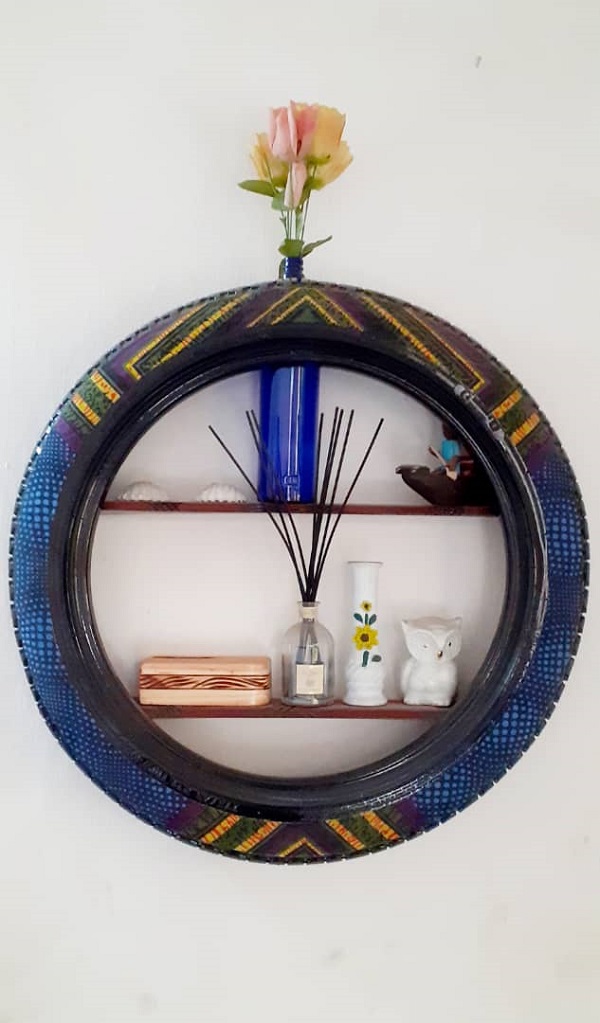
HELPING TO DRIVE THE CIRCULAR ECONOMY AGENDA
Nigeria is a signatory to several international treaties such as the UN Climate Change Convention, the Basel Convention — and the country has joined other nations to make legislation on the management of waste such as plastic. This legislation is aimed at developing a circular economy around plastic and supporting recycling initiatives in the country.
Accordingly, Edom keys into the circular economy drive through the work he does, but it does not come without challenges. Some of these include funding and public ignorance on the need to preserve the environment.
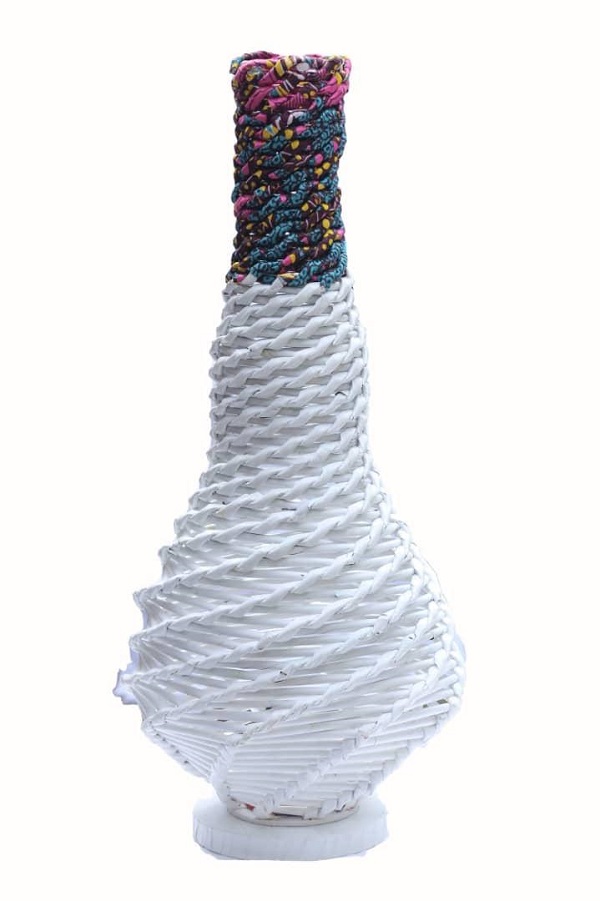
Edom said although he meets dead ends while trying to secure funding, and endures mockery for picking trash, he will not relent. He rather hopes to upscale, begin mass production as well as make fashion from waste to drive awareness.
“The idea is to create a circular chain where everyone becomes a recycler; either recycling or sending their waste to recyclers for new products,” he added, sharing his vision.
“The objective is to creatively harness the use of solid waste as a potent media for artistic creation of aesthetics and utility, thereby redirecting human conceptual thinking towards the importance of waste and its positive values.”
Add a comment
